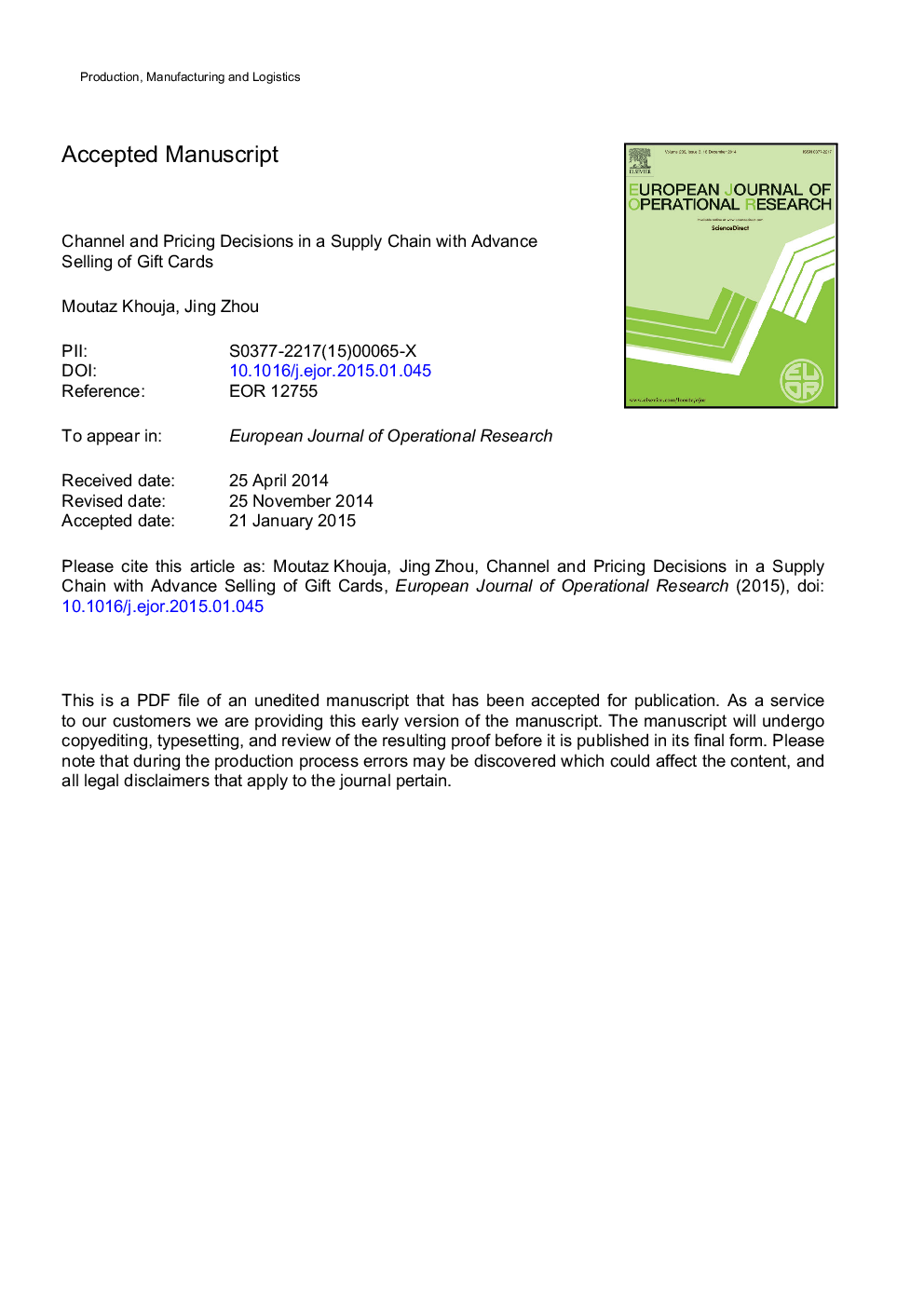| Article ID | Journal | Published Year | Pages | File Type |
|---|---|---|---|---|
| 6896589 | European Journal of Operational Research | 2015 | 42 Pages |
Abstract
Many service providers, such as restaurants, are selling their gift cards through independent retailers. We analyze a supply chain of a service provider who sells products and gift cards at face value at its locations. The service provider also sells its gift cards through a retailer. Consumers may buy gift cards from the service provider or the retailer for their own use and/or to use as gifts. Consumers may be customers of both the service provider and retailer (Dual), only the service provide (SP-only), or only the retailer (retailer-only). We find that under a large enough gift cards' redemption rate and no gift-givers, it is sub-optimal for a service provider to sell gift cards through a retailer. When there are some Retailer-only gift-givers, it is optimal for the service provider to sell gift cards through a retailer. We identify threshold redemption rates at which it is optimal for a service provider to sell gift cards through an independent retailer to different consumer segments. We also find that the SP may not always prefer a low redemption rate and for some service providers with large additional spending rates above redeemed gift cards' value, profit may increase with the redemption rate. Also, centralization in the SP-retailer supply chain in this paper may lead to only a small increase in profits. Numerical analysis indicate that the redemption rate needed to make it optimal for the service provider to sell gift cards to all consumers through a retailer is unlikely to occur in practice.
Related Topics
Physical Sciences and Engineering
Computer Science
Computer Science (General)
Authors
Moutaz Khouja, Jing Zhou,
